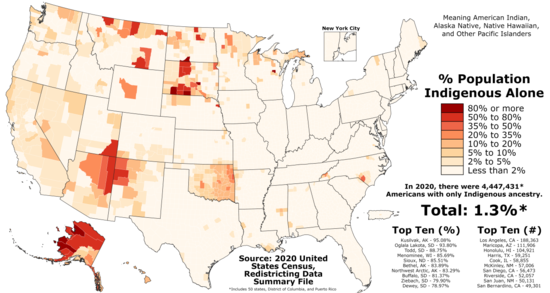
Native Americans in the United States have had a unique history in their ability to vote and participate in United States elections and politics. Native Americans have been allowed to vote in United States elections since the passage of the Indian Citizenship Act in 1924, but were historically barred in different states from doing so.[1] After a long history of fighting against voting rights restrictions, Native Americans now play an increasingly integral part in United States elections. They have been included in more recent efforts by political campaigns to increase voter turnout. Such efforts have borne more notable fruit since the 2020 U.S. presidential election, when Native American turnout was attributed to the historic flipping of the state of Arizona, which had not voted for the Democratic Party since the 1996 U.S. presidential election.[2]
Despite this increase, in general, voter turnout remains low among Native Americans, as does overall trust in American political institutions. They are usually more likely to vote in tribal elections and to trust their officials.[3]
- ^ Riggs, Christopher K (2020). Rising from the Ashes: Survival, Sovereignty, and Native America. Nebraska: University of Nebraska Press. pp. 169–220.
- ^ Fonseca, Felicia (2020). "Native American votes helped secure Biden's win in Arizona". AP News.
- ^ Schroedel, Jean; Berg, Aaron; Dietrich, Joseph; Rodriguez, Javier M. (2020). "Political Trust and Native American Electoral Participation: An Analysis of Survey Data from Nevada and South Dakota". Social Science Quarterly. 101 (5): 1885–1904. doi:10.1111/ssqu.12840. S2CID 225568501.
{{cite journal}}: CS1 maint: multiple names: authors list (link)
© MMXXIII Rich X Search. We shall prevail. All rights reserved. Rich X Search
